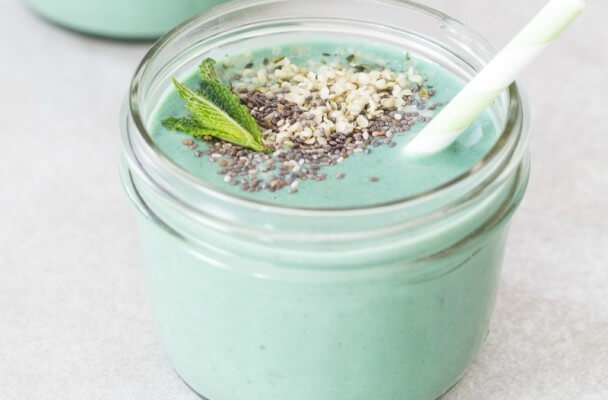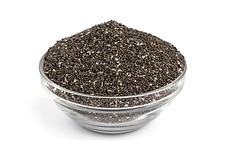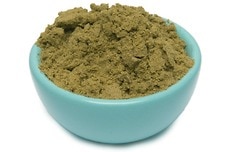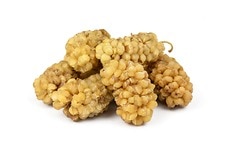Meal Replacement Shakes
Our modern world has led to people having less time for meal preparation, with 58% of consumers in the U.K. spending less than 30 minutes cooking dinner and 60% of Americans not knowing by late afternoon what they will eat for dinner that evening (Agriculture and Agri-Food Canada, 2010). Our fast-paced environment causes people to put a premium on time and efficiency when determining what foods they want to eat. One popular trend is to enjoy a meal replacement shake in lieu of a traditional meal. Often, a meal replacement shake will be consumed instead of breakfast or lunch, providing the energy needed to keep you going throughout the day without the hassle of meal preparation.
What Is the Purpose of a Meal Replacement Shake?
As its name suggests, a meal replacement shake is designed to replace the nutritional value of an entire meal. This means that a good meal replacement shake is not like your typical shake or smoothie. Ideally, it would contain the nutrients needed to give your body energy and nutritional support.
There are several benefits to drinking a meal replacement shake instead of preparing a meal. First, meal replacement shakes are extraordinarily convenient. Rather than having to prepare yourself a breakfast as you try to rush out the door, you can simply grab a meal replacement shake and be on your way. Additionally, meal replacement shakes can be an economical choice. Rather that purchasing ingredients that go to waste because you do not have time to make your own food, a meal replacement shake is easy to plan for. Finally, a good meal replacement shake can truly replace the foods you would otherwise eat. Finding a meal replacement shake with a healthy balance of nutrients can give your body the energy it needs in a convenient, tasty format.
Nutritional Profile of a Healthy Meal Replacement Shake
When considering the nutritional profile of a healthy meal replacement shake, it is important to first think about your nutritional needs for a traditional meal. For breakfast and lunch, the meals that people typically replace with a shake or smoothie, there are several crucial nutrients to obtain. Carbohydrates are the primary source of energy for your body (Choose My Plate, 2016), meaning that a meal replacement shake should contain plenty of carbs.
At the same time, you want to receive enough protein to keep your body feeling full. Each protein molecule contains a chain of amino acids, which are used to create new proteins, to rebuild cellular structures, and to repair muscle tissue. Getting protein in your meal promotes satiety, which means you will not experience hunger pangs shortly after drinking your meal replacement shake (Paddon-Jones et al., 2008). A 60:40 carbohydrate to protein ratio is a good point to aim for when choosing a meal replacement shake (Vanstone, 2016).
It is also helpful to find a meal replacement shake that contains some fiber. Like protein, fiber promotes satiety (Mayo Clinic, 2015). It also keeps your blood sugar stable, preventing you from experiencing spikes and later dips in blood sugar. Adult men need 38 grams of fiber per day, while women need 25 grams daily (Mayo Clinic, 2015). Try to find a meal replacement shake with at least a few grams of dietary fiber to meet your goal.
Making Your Own Meal Replacement Shake at Home
Unfortunately, many commercial meal replacement shakes are laden with sugar and fat. This may make them tasty, but it does not make them particularly healthy. Instead, make your own meal replacement shakes at home. For a simple dairy-free shake, try combining a half-cup almond milk, a half-cup coconut milk, 2 tablespoons of a nut butter (e.g., almond butter), a squeeze of honey, one serving of protein powder, and 1 tablespoon cocoa powder, or try the additional recipes included in the sections below (Brabaw, 2015). Adding chia seeds or green tea matcha powder gives your shake a superfood boost.
Dietary Considerations When Using a Meal Replacement Shake
People who have a milk allergy or people who are lactose intolerant should be cautious when purchasing commercial meal replacement shakes. Many meal replacement shakes add protein by incorporating whey protein powder, which contains lactose. This may cause upset stomach in people with dairy sensitivities.
It is also important to remember that although a meal replacement shake can take the place of a meal, you should drink it in the context of an otherwise balanced diet. Drinking a meal replacement shake for breakfast, lunch, and dinner would result in an unhealthy eating plan that may cause nutritional deficiencies. Even the best meal replacement shake does not contain the optimal amounts of micronutrients -- minerals, vitamins, antioxidants, and other beneficial nutrients -- found in whole, natural foods (World Health Organization, 2013). Try to replace only one meal per day with a shake, eating healthy and balanced meals for the remainder of the day to ensure you remain healthy.
Meal Replacement Shake Recipes
These shakes contain a balanced amount of protein, fiber, and carbohydrates- while also offering a healthy helping of many of the micronutrients you need. For a full list of our shake recipes, check out our shake recipe page here.

Protein-Packed Detox Smoothie Recipe {vegan}
Two servings of this simple smoothie can be made in a matter of minutes, making it an efficient option for those seeking a time-saving meal. Additionally, this blended beverage is well-balanced with protein, carbohydrates, fiber, and the micronutrients you need from whole, natural ingredients.
Ingredients: Almond milk, frozen banana, spirulina, hemp protein powder (optional), fresh mint, chia seeds, hemp hearts.
Total Time: 5 minutes
| Yield: 2 servings

Matcha Green Tea Smoothie Recipe {gluten-free, vegan}
Another smoothie to mix things up with a familiar flavor you’ll love, this matcha shake offers a tastier option than your typical meal replacement drink while still supplying the nutrients you need. Additionally, this shake is quick to make and offers a whopping 4 servings per batch to help you get through the week.
Ingredients: Almond milk, matcha green tea powder, hemp protein powder, almond flour, dried mulberries, pitted dates, flaxseed meal, ice cubes, stevia powder.
Total Time: 5 minutes
| Yield: 4 smoothies
Meal Replacement Shake Ingredients
These items make great additions to any shake meant to serve you the full nutrition of a whole meal. For more ingredients that add nutrients to your smoothies and shakes, check out our protein shakes page.
Healthy Eating
- Healthy Snacks
- Healthy Highlights
- 5 Uses for Cacao Powder
- 5 Ways to Eat Farro
- 6 Best Gluten-Free Foods
- Alcohol and the Body
- Almond Flour Recipes
- Anti-Aging Superfoods
- Beat the Afternoon Slump
- Benefits of a Plant-Based Diet
- Benefits of Baobab
- Benefits of Cashews
- Benefits of Coconut Oil for Hair
- Benefits of Coconuts
- Benefits of Dates
- Benefits of Fenugreek
- Benefits of Garcinia Cambogia
- Benefits of Goji Berries
- Benefits of Kale Chips
- Benefits of Monk Fruit Sweetener
- Benefits of Peanuts
- Benefits of Pecans
- Benefits of Pistachios
- Benefits of Pumpkin Seeds
- Benefits of Spelt Flour
- Benefits of Steel Cut Oats
- Benefits of Sunflower Seeds
- Benefits of Tiger Nuts
- Benefits of Turmeric
- Benefits of Walnuts
- Benefits of Wheatgrass
- Best Food Fads
- Cacao vs Cocoa
- Caffeine-Free Energy Foods
- Chocolate That's Good for You
- Diet vs. Exercise
- Fat Burning Foods
- Food Myths Debunked
- Foods for Bone Density
- Foods for Colon Health
- Foods for Healthy Hair
- Foods for Healthy Skin
- Foods to Help Sleep
- Foods to Reduce Stress
- Green Tea Benefits
- Healthy Baking Flours
- Heart Healthy Habits
- High Protein Health Risks
- How to Boost Your Metabolism
- How to Lose Weight While Aging
- How to Throw a Vegan BBQ
- Kaniwa vs Quinoa
- Little Health Foods
- Low-Carb: Fad or Friend?
- Making Healthier Desserts
- Mediterranean Diet Meal Plan
- Natural Beauty Products
- Nuts for Weight Loss
- Preparing Vegan Meals
- Preventing Muscle Degeneration
- Rare Superfoods
- Reduce Sugar Intake
- Save Time By Going Vegan
- Smarter Snack Swaps
- Smoothie Ingredients
- Soy Protein vs Whey Protein
- Starting a Plant-Based Diet
- Steel Cut vs Rolled Oats
- Sugar Substitutes
- Vegan Proteins
- Vegan Substitutions for Fall Recipes
- Why Go Vegan
- Healthy Meals
- Healthy Recipes
- Nutrition and Special Diets
- 21 Day Fix
- 5 Popular Diet Similarities
- Alkaline Diet
- Anti-Inflammatory Diet
- Calorie Counting
- Carb Cycling Diet
- Celiac Disease
- Cholesterol
- Clean Eating
- Crohn's Disease
- DASH Diet
- Detox Diet
- Diabetes
- Diabetes Diet
- Diet Pill Dangers
- Fat Burning Foods
- Gluten-free Diet
- Glycemic Index
- Heart Health
- High Blood Pressure Diet
- High Fiber Foods
- How to Eat Healthy
- How to Lower Blood Pressure
- Hypertension
- IBS Diet
- Ketogenic Diet
- Liquid Diet
- Low GI Foods
- Low-Carb Diet and Foods
- Low-Fat High-Carb Diet
- Mediterranean Diet
- Mediterranean Diet Foods
- Military Diet
- Nutrition Labels Explained
- Paleo Diet
- Raw Food Diet
- Superfoods
- Sustainable Weight Loss
- Thrive Diet
- Vegan Diet
- Vegetarian Diet
- Weight Loss Shakes
- Whole30
- Vitamins, Minerals & Nutrients



